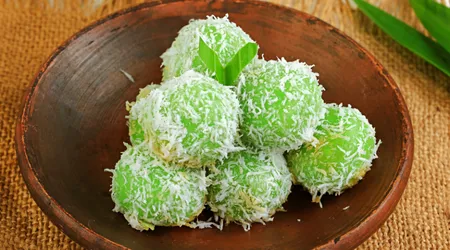Gluten-Free Italian Desserts
THE gluten-free Italian desserts They represent a quiet revolution in the Italian culinary tradition, combining the pleasure of artisanal pastry making with the need to satisfy specific dietary needs.
Announcements
Celiac disease and gluten sensitivity affect millions of people around the world, but that doesn't mean giving up the authentic taste of a tiramisu or the crunch of a freshly baked cookie.
This article explores how Italian confectionery has adapted to offer inclusive taste experiences while maintaining its cultural essence intact.
Gluten-Free Italian Desserts

Italian cuisine is synonymous with conviviality, history and creativity, and desserts are a fundamental pillar.
However, for those who suffer from food intolerances, the gastronomic landscape can seem like a labyrinth of restrictions.
Announcements
Fortunately, innovation and a passion for quality have allowed master pastry chefs to reinvent classics like panettone, pastiera and cantucci in gluten-free versions, without compromising on flavour or texture.
This journey into the world of gluten-free Italian desserts It is not just a response to a need, but an opportunity to rediscover tradition with new eyes.
Why limit yourself to dreaming of the smell of a freshly baked cake when you can enjoy it without worries?
The growing demand for gluten-free products has pushed manufacturers and chefs to explore new frontiers, using alternative flours and innovative techniques.
++ Decorated Christmas Cookies: The Art of Festive Desserts That Enchant
In this context, gluten-free Italian desserts are not just an alternative, but a celebration of creativity and inclusivity that deserves to be known and appreciated.
Italian Tradition Reinvented: Why Gluten-Free Desserts Are a Treasure
Italian pastry is a mosaic of regional flavors, where each dessert tells a story of territory, seasons, and culture.
Think of the delicacy of a Neapolitan sfogliatella or the richness of a Sicilian cannolo: these masterpieces have long been inaccessible to those following a gluten-free diet.
However, thanks to the evolution of pastry techniques, it is now possible to recreate these delicacies using ingredients such as rice flour, almond flour, or cornstarch, which guarantee surprising results without sacrificing authenticity.
An original example of this reinvention is the Rice and Coconut Tiramisu, a gluten-free variant of the classic dessert.
In this recipe, traditional ladyfingers are replaced with biscuits made from rice flour and coconut, which absorb the coffee without losing their structure, while the mascarpone cream remains velvety and indulgent.
This dessert demonstrates how innovation can respect tradition, offering an experience that combines taste and lightness.
Furthermore, the choice of naturally gluten-free ingredients enhances the flavors, making every bite a sensory journey.
According to a study by the Italian Celiac Association (AIC), approximately 11% of the Italian population suffers from celiac disease, but the market for gluten-free products has grown by 20% over the last five years, a sign of ever-increasing demand.
This trend has pushed pastry chefs to experiment, creating not only gluten-free versions of classic desserts, but also new creations that showcase alternative flours.
++ Homemade Chocolates: The Art of Creating Unique Sweet Treats
The result is a confectionery panorama that doesn't simply imitate, but enriches tradition with new possibilities.
The Art of Alternative Flours: A Bridge Between Tradition and Innovation

We imagine gluten-free baking as a bridge between two shores: on one side, Italian tradition with its timeless flavors; on the other, innovation that makes these flavors accessible to all.
Alternative flours, such as buckwheat, quinoa, or chickpeas, are the cables that support this bridge.
These are not simple substitutes, but ingredients that add unique nuances of flavor, transforming desserts into completely new gastronomic experiences.
A creative example is the Gluten-Free Almond and Orange Cake, inspired by the classic Caprese cake but revisited with a modern twist.
This cake uses almond flour and fresh orange juice to create a smooth texture and a citrusy flavor that pairs perfectly with a dusting of powdered sugar.
Almond flour, naturally gluten-free, lends a rich flavor that makes this dessert a sophisticated alternative, capable of conquering even the most discerning palates.
It's an example of how gluten-free eating can become an opportunity to explore new flavor combinations.
Alternative flours are not just a necessity, but a strategic choice for modern pastry chefs.
For example, teff flour, originally from Ethiopia, is gaining popularity for its versatility and nutritional profile.
Rich in fiber and minerals, it allows you to create light but structured desserts, such as tarts or biscuits.
Furthermore, the use of these flours responds to a growing food awareness, where consumers are looking for not only safe, but also sustainable and nutritious products.
This approach demonstrates that the gluten-free Italian desserts they can be a meeting point between health, taste and innovation.
Table:
| Alternative Flour | Characteristics | Typical Sweets |
|---|---|---|
| Rice Flour | Light, neutral, ideal for crumbly textures | Biscuits, soft cakes, gluten-free ladyfingers |
| Almond Flour | Rich, aromatic, gives softness | Caprese cakes, amaretti biscuits, tarts |
| Buckwheat Flour | Rustic flavour, dense structure | Tarts, cakes with dried fruit |
| Teff Flour | Nutritious, versatile, slightly nutty | Biscuits, light cakes, pastries |
The Texture Challenge: How to Make Perfect Gluten-Free Desserts
One of the main challenges in gluten-free baking is replicating the texture that gluten gives to dough: elasticity, softness, and crunchiness.
Gluten, in fact, acts like a net that traps air and gives structure to desserts.
Without it, pastry chefs must rely on advanced techniques and binding ingredients, such as xanthan gum or flaxseed meal, to achieve comparable results.
This process is similar to an orchestra that must play in perfect harmony without its conductor: each element must be precisely calibrated.
The key to success lies in experimentation and in-depth knowledge of the ingredients.
For example, cornstarch can add lightness, while tapioca flour adds elasticity.
An expert pastry chef knows how to balance these elements to create desserts that not only satisfy the palate but also surprise with their faithfulness to tradition.
Furthermore, hydration of gluten-free dough is crucial: a dough that is too dry risks crumbling, while one that is too moist can be rubbery.
This balance requires almost scientific attention, but the result is a dessert that has nothing to envy of its traditional version.
Another fundamental aspect is the resting time of the dough.
Unlike gluten-containing doughs, gluten-free doughs often require longer resting times to allow the ingredients to blend and the alternative flours to absorb the liquids.
This often overlooked step can make the difference between a crumbly cookie and one that crumbles at the first bite.
Patience, in this case, becomes an essential ingredient, transforming the gluten-free Italian desserts into true masterpieces of technique and flavor.
Inclusivity at the Table: Gluten-Free Desserts for Every Occasion
THE gluten-free Italian desserts They are not only a solution for those with intolerances, but an invitation to share the pleasure of the table without barriers.
In a country like Italy, where food is a universal language, food inclusivity is a value that is increasingly gaining ground.
Whether it's a family dinner, a birthday party, or a wedding, gluten-free desserts allow everyone to share the joy of a shared dessert, without exception.
Let's think about a special occasion, like a wedding: a gluten-free wedding cake can be just as spectacular as a traditional one, with layers of rice flour sponge cake and dark chocolate decorations.
This type of dessert not only satisfies guests with dietary restrictions, but also becomes a symbol of attention and care for each guest.
The ability to customize gluten-free desserts also opens the door to unique creations, such as cakes with fresh fruit fillings or vegan creams, further expanding the offering.
Inclusivity doesn't stop at taste, but extends to culture.
Gluten-free desserts are becoming an integral part of Italian pastry shops, with dedicated laboratories and certifications that guarantee safety for celiacs.
This phenomenon reflects a broader change: Italian cuisine is no longer just tradition, but an open dialogue with modern needs.
Offering gluten-free Italian desserts, pastry chefs not only answer a question, but build a bridge to a future where food is truly for everyone.
Table:
| Occasion | Gluten-Free Dessert | Main Features |
|---|---|---|
| Birthday | Rice and Chocolate Cake | Soft layers, velvety cream, customizable decorations |
| Christmas | Gluten-Free Panettone | Raisins, candied fruit, honeycomb texture, traditional aroma |
| Marriage | Multi-layered Wedding Cake | Elegant, customizable, suitable for large events |
| Daily Break | Almond Cookies | Crunchy, aromatic, perfect with coffee |
Frequently Asked Questions About Gluten-Free Italian Desserts
| Request | Answer |
|---|---|
| Are gluten-free desserts less tasty? | Absolutely not! Thanks to alternative flours and modern techniques, gluten-free desserts can be just as tasty and inviting, with particular attention to the quality of the ingredients. |
| Where can I find gluten-free Italian desserts? | Many artisanal pastry shops and certified chains offer gluten-free desserts. Furthermore, Italian supermarkets have dedicated sections, and many recipes can easily be made at home. |
| Are they safe for celiacs? | Certified gluten-free desserts, produced in controlled environments, are safe for celiacs. It's important to check for the "crossed-out ear of wheat" mark or similar certifications. |
| Can I make gluten-free desserts at home? | Of course! With flours like rice or almond flour and well-balanced recipes, you can create delicious desserts. There are many specific guides and tutorials available online. |
| Are gluten-free desserts more expensive? | In some cases, yes, due to the cost of alternative flours and controlled production processes. However, the growing market is making prices more affordable. |
Conclusion: A Sweet and Inclusive Future
THE gluten-free Italian desserts They are much more than an alternative: they are a testament to Italian cuisine's ability to evolve without losing its soul.
Every bite of an almond flour cookie or a slice of gluten-free panettone is a step toward a world where taste knows no barriers.
Tradition intertwines with innovation, creating culinary experiences that celebrate diversity and inclusivity.
Whether you're rediscovering a classic or experimenting with a new creation, these desserts demonstrate that Italian pastry making is ready to welcome everyone to the table.
As awareness and options become more available, the future of gluten-free Italian desserts It's bright, full of possibilities, and, above all, delightfully accessible.
